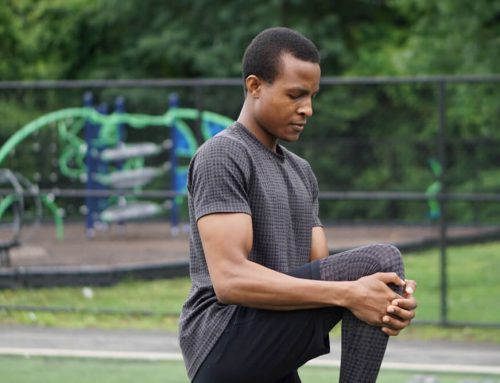As a runner, one of the most important decisions you’ll make is choosing the right pair of running shoes. Wearing proper shoes can help prevent injuries, improve your running performance, and make your overall running experience more comfortable.
However, not all running shoes are created equal, and what works for one runner may not work for another. That’s because different feet types require different levels of support, cushioning, and structure.
In this article, we’ll discuss how to choose the right running shoes for your feet. We’ll cover everything from understanding your foot type and gait to shopping for and maintaining your running shoes.
Understanding Your Foot Type
The first step in choosing the right running shoes for your feet is understanding your foot type. There are three main types of feet: flat, neutral, and high-arched.
- Flat feet. This means that the arches on the inside of your feet are very low or non-existent. This can cause your feet to roll inward (pronation) when you walk or run. This can lead to overuse injuries like shin splints, plantar fasciitis, and Achilles tendonitis.
- Neutral Feet: If you have neutral feet, it means that your arches are neither too high nor too low. When you walk or run, your feet roll inward slightly (pronation) to absorb shock, but not excessively.
- High-Arched Feet. If you have high-arched feet, it means that the arches on the inside of your feet are very high. This can cause your feet to roll outward (supination) when you walk or run. This can lead to injuries like ankle sprains, IT band syndrome, and plantar fasciitis.
Identification of Your Foot Type: To identify your foot type, you can perform a simple wet test. Wet the sole of your foot and step onto a piece of paper to show your footprints. If you have flat feet, you’ll see a complete footprint with little to no arch. High-arched feet? You’ll see a very narrow footprint with a deep curve in the middle. If you have neutral feet, you’ll see a footprint with a moderate arch.
Analysing Your Feet and Gait. Once you’ve identified your foot type, it’s important to analyse your feet and gait. This will help determine any other factors that might affect your shoe choice. A podiatrist or running specialist can perform a gait analysis. This can help identify any issues that may require additional support or cushioning in your shoes.
By understanding your foot type and gait, you can make a more informed decision. In the next section, we’ll discuss some key factors to consider when selecting running shoes based on your foot type.
Factors to Consider When Choosing Running Shoes
Now that you’ve identified your foot type and gait, it’s time to consider some key factors when selecting the right running shoes. Here are five important factors to keep in mind:
- Shoe Categories: Running shoes fall into three main categories: neutral, stability, and motion control. Neutral shoes are best for runners with neutral feet or high-arched feet who don’t need a lot of extra support. Stability shoes are designed for runners with flat feet or low arches who need more support to control pronation. Motion control shoes are for runners with severe overpronation and require maximum support and control.
- Shoe Cushioning: Running shoes come in a range of cushioning levels, from minimalist (little to no cushioning) to neutral (moderate cushioning) to maximalist (maximum cushioning). The right cushioning level depends on your foot type, running style, and personal preference.
- Heel-to-Toe Drop: The heel-to-toe drop (or offset) refers to the difference in height between the heel and forefoot of the shoe. Some runners prefer a high drop for extra cushioning and support, while others prefer a low drop for a more natural feel. The right drop depends on your foot type and running style.
- Shoe Weight: The weight of your running shoes can also affect your performance and comfort. Lighter shoes are generally more responsive and can help you run faster, but may not offer as much cushioning or support. Heavier shoes can provide more cushioning and support but may feel less nimble.
- Shoe Size and Fit: Finally, it’s important to choose a shoe that fits well and feels comfortable on your foot. Your shoe should have enough room in the toe box to allow your toes to move freely, but not so much room that your foot slides around. It’s also important to consider the width of your foot and any specific foot issues (like bunions or hammertoes) when selecting the right size and fit.
By considering these factors and choosing a shoe that is appropriate for your foot type and running style, you can help prevent injuries, improve your running performance, and enjoy a more comfortable and enjoyable running experience.
Shopping for Running Shoes
Once you’ve identified your foot type and considered the important factors when selecting running shoes, it’s time to hit the stores! Here are some tips for shopping for the perfect pair of running shoes:
- When to Shop: It’s a good idea to shop for running shoes later in the day or after a run when your feet are slightly swollen. This will give you a more accurate sense of how the shoes will feel during a run.
- Finding a Specialty Running Store: Look for a store that specialises in running shoes and has knowledgeable staff who can help you find the right shoes for your feet and running style. They can also help you with the fitting process and answer any questions you may have.
- Trying on and Testing Running Shoes: Once you’ve found some shoes that fit your foot type and running needs, it’s time to try them on! Walk around the store, jog in place, and even take them for a short run on a treadmill if possible. This will give you a better sense of how the shoes feel and perform during different types of movement.
- Tips for Ensuring a Proper Fit: When trying on running shoes, there are a few things to keep in mind to ensure a proper fit. First, make sure there is enough room in the toe box for your toes to move freely. Second, check that the heel of the shoe fits snugly but doesn’t slip. Finally, consider any specific foot issues you may have (like bunions or plantar fasciitis) and choose a shoe that accommodates them.
By taking the time to shop for the right running shoes and ensuring a proper fit, you can help prevent injuries and enjoy a more comfortable and enjoyable running experience. Don’t be afraid to ask for help and try on multiple pairs until you find the perfect fit!
Maintaining Your Running Shoes
Once you’ve found the perfect pair of running shoes, it’s important to take good care of them to extend their lifespan and ensure they continue to provide the support and cushioning you need for your runs. Here are some tips for maintaining your running shoes:
- How to Extend the Lifespan of your shoes: There are a few things you can do to help your running shoes last longer. First, try to rotate between multiple pairs of shoes to give each pair time to rest and recover between runs. Second, avoid wearing your running shoes for non-running activities, as this can cause unnecessary wear and tear. Finally, try to avoid exposing your shoes to extreme temperatures or wet conditions, which can cause the materials to break down more quickly.
- When to Replace Your Running Shoes: Even with proper care, shoes will eventually wear out and lose their support and cushioning. It’s generally recommended to replace your shoes every 300-500 miles or every 6-8 months, whichever comes first. If you start to notice signs of wear and tear (like holes in the upper or worn-out soles), it’s definitely time to invest in a new pair.
- Proper Cleaning and Storage: To keep your shoes looking and feeling their best, it’s important to clean them regularly and store them properly. Use a soft-bristled brush or damp cloth to remove dirt and debris from the upper and outsole, and let them air dry in a well-ventilated area. Avoid machine washing or drying your shoes, as this can damage the materials. When not in use, store your shoes in a cool, dry place away from direct sunlight.
By following these tips for maintaining your shoes, you can help ensure they continue to provide the support and cushioning you need for your runs and keep your feet happy and healthy for miles to come.
Conclusion
Choosing the right running shoes is essential for keeping your feet comfortable, healthy, and injury-free during your runs. By understanding your foot type and considering factors like shoe category, cushioning, and fit, you can find the perfect pair of running shoes for your needs. Here’s a quick recap of the key points covered in this article:
- Your foot type is an important factor to consider when choosing shoes. Flat feet, neutral feet, and high-arched feet all require different types of support and cushioning.
- When shopping for shoes, it’s important to consider factors like shoe category, cushioning, heel-to-toe drop, shoe weight, and fit to find the perfect pair for your needs.
- Shopping at a specialty running store and trying on multiple pairs of shoes can help you find the perfect fit and ensure you’re getting the support and cushioning you need.
- To extend the lifespan of your running shoes, rotate between multiple pairs, avoid wearing them for non-running activities, and store them properly. Replace your shoes every 300-500 miles or every 6-8 months, whichever comes first.
By following these tips and finding the perfect pair of running shoes, you can help prevent injuries and keep your feet happy and healthy for all of your runs. Happy shopping!
For further help in your running journey see our Training Plans and Training Sessions.
If you like our brand and would like to support us see our Shop.






